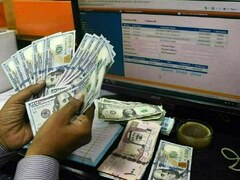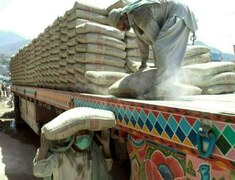Up till the last quarter of FY22 at least, it seemed nothing could stop the cement industry from raking substantial earnings during the year; not escalating costs in the form of fuel and energy prices skyrocketing, not the upward trajcectory of input prices in the global markets, not rupee depreciation and certainly not exports plunging despite dull domestic offtake. The super-tax imposition however did change the game. Combined financials for 16 cement companies listed on PSX show the effective tax for FY22 stood at 42 percent compared to 22 percent in FY21.
A quick run-down of numbers suggest cost escalation was passed on sufficiently through retention prices. Despite dispatches dropping 8 percent—where the bigger downward pressure came from falling exports, coming down to 10 percent of offtake in FY22 from 16 percent last year—revenues grew 33 percent. This translated to an incredible average revenue per ton sold growth of 45 percent. Coal prices in the international markets have driven up over the past year, more so post the Russian-Ukraine war. Cement companies have thus been procuring coal from Afghanistan and mixing it up with some domestic coal to minimize costs, with many companies using predominantly significantly cheaper Afghan coal. Usage of waste heat recovery and captive power across many plants also enabled cement companies to reduce energy costs. Costs per ton sold rose 43 percent in FY22, which is a big jump, though not as big as the increase in top-line. Rising cement prices however have suppressed demand along with other macroeconomic indicators all pointing toward construction slowdown. This will start reflecting in FY23 statistics.

In terms of overheads, due to reduced exports, distribution expenses incurred were lowered. Cumulatively, overheads and other expenses as a share of revenue reduced to 6 percent from 7 percent in FY21. Finance costs reduced to 3 percent of revenue (Fy21: 4%). While overheads will remain in check in the coming quarters, finance costs are likely to be higher due to hikes in interest rates specially as many companies undergo expansion financed by bank borrowing (though they will be utilizing SBP’s TERF providing concessional financing).
With a solid gross profit growth, muted overheads and “other income” buttressing the bottom-line, earnings before tax grew 42 percent during the year (cumulatively for the industry). However, with the higher tax incidence during the fourth quarter (estimated and combined at 77% for all cement companies), profits post-tax ended up growing only 5 percent. As a result, margins also fell to 11 percent for the industry.
There will not be any visible increase in exports in the near future as most traditional markets (Afghanistan for instance) for Pakistani exporters are undergoing considerable political and economic challenges. Freight rates are still too high making exports rather uncompetitive. With that outlook, the burden falls on domestic demand to deliver which it is expected not to. Development spending related to floods may tilt the favors toward the construction industry but all other indicators suggest demand will remain dull as the economy trudges out of the current quickstand it is trapped in. With Imran Khan ouster, there is little hope for the revival of the Naya Pakistan Housing Program (NPHP), though the SBP has maintained that it would be revamp the Mera Pakistan Mera Ghar scheme and provide mark-up subsidies to first time home buyers. That will boost demand once its operational. Constructions costs—particularly cement and steel—are prohibitively high which has been discouraging for private constructors and builders. Back-breaking inflation will keep activity in construction to minimal.
For cement makers, the challenge will be to keep prices high enough to secure margin maintaince with demand already weakening. That will be tough to manage. Finance costs with hiked up interest rates will come to bite even as overheads remain stable.























Comments
Comments are closed.